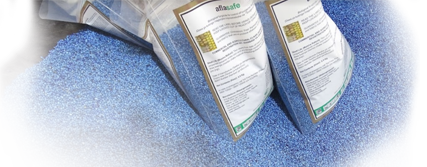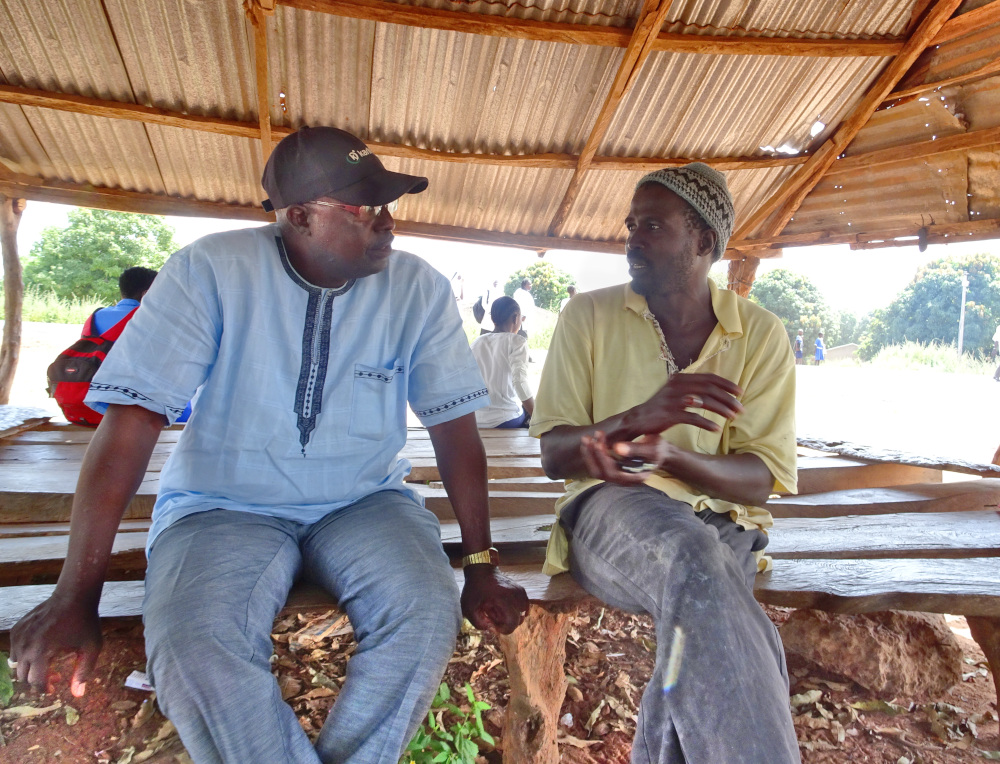
Sneak peek into astounding observations reported by farmers, some of whose causes science is yet to unravel
In October 2018 we travelled from our Aflasafe labs and experimental fields, and from business-development dialogues and fora, into the reality on the ground, as our product truly leaves IITA for its new owners – Aflasafe-using farmers, and the manufacturers, distributors and other agencies that make it available to them. Here are their perspectives…
The first stop in our farmer-reality travels is in The Gambia, West Africa, where the National Food Security, Processing and Marketing Corporation (NFSPMC, formerly GGC – Gambia Groundnut Corporation) has been working with 700 farmers since 2014, selected to grow aflatoxin-safe groundnuts. Target regions are nearly half (three) out of The Gambia’s seven, namely, Northern and Central River Regions in the north and the West Coast Region in the south. All three selected regions firmly fall within The Gambia’s groundnut belt.

“We distributed 50 tonnes of Aflasafe this year to farmers, from whom we anticipate harvesting 5,000 tonnes of aflatoxin-safe groundnuts,” says Mr Patrick Jarju, Head of NFSPMC’s Chemistry and Biological Laboratory. “This has been a joint effort with extension staff from the Ministry of Agriculture, and with IITA’s Aflasafe Technology Transfer and Commercialisation initiative [ATTC] who provided training and expert advice on how to use Aflasafe effectively.”
According to Patrick, farmers say that Aflasafe enhances both the quality and quantity of their groundnuts.
But let’s hear it directly from the farmers themselves, starting with those in Mollet-Ba, a hamlet across the river not too far from Banjul, The Gambia’s capital city.
There, we sat with Assan Joof, Pa-Modou Diouf, Kemo Diawarra and Omar Diouf.
“One cannot compare the quality of Aflasafe-treated groundnuts with the untreated ones”
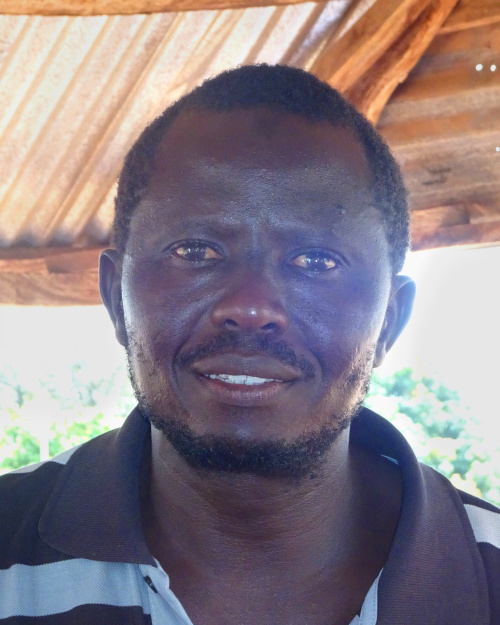
Mr Assan Joof grows groundnuts, millet and cassava on three hectares, of which two hectares are devoted to groundnuts. He’s married with three children. Assan has been using Aflasafe for two years now, since 2017, because he learnt that Aflasafe helps to control aflatoxin in groundnuts. Furthermore, Aflasafe-protected groundnuts command a better price on the market, and stored well without him having to use insecticide. “Also, one cannot compare the quality of Aflasafe-treated groundnuts with the untreated ones,” Assan asserts. “Aflasafe-treated groundnuts are fully mature, dry earlier and much faster, and have larger grains.”
But that rosy picture aside, among the changes Assan would like to see is a better Aflasafe distribution system. “Demand surpasses supply: many farmers inquired on where to find Aflasafe, having seen its effects on my groundnuts, but they could not get the product,” says Assan. “Distribution also takes time, and Aflasafe should therefore be supplied earlier, in May or early June, well before the onset of the rains, to enable timely application,” he adds.
Assan is the secretary of the Mollet-Ba farmers co-operative of 150 farmers.

Mr Pa-Modou Diouf grows groundnuts, maize, millet and watermelons on 11 hectares, with a family of eight children and an extended family of nine siblings, all under his care. This is his second year using Aflasafe on his groundnuts, having started in 2017. He first heard about Aflasafe from fellow farmers, and then got fuller information from NFSPMC. “Aflasafe has many benefits. I was particularly drawn to the health advantages and prevention of liver cancer. And then there is the better price offered for Aflasafe-treated groundnuts. Both of these aspects are very important for family and community health and wellbeing. I have also observed that Aflasafe-treated groundnuts appear to have more resistance to infestation by insects.”
“I don’t just recommend [Aflasafe] to my friends but even to my ‘bad friends’ and enemies!”
Would Pa-Modou recommend Aflasafe to other farmers? “Unreservedly, and in fact, I already have. Initially, they were reticent, but not anymore. There is greater demand than supply. I don’t just recommend it to my friends but even to my ‘bad friends’ and enemies! And just today, even as harvest season will be in December, I had someone demanding Aflasafe to keep for use in the next sowing season!”
But what prompted pioneering Pa-Modou to use Aflasafe even as others did not? The pioneer is also a philosopher. “In life, we must take chances. That is what I did. I wanted to know by my own direct experience on the effectiveness of this all-natural solution to control aflatoxin,” Pa-Modou reveals. “And so, I decided to give Aflasafe a try. Those who refused to try it then have since seen the light.”
Besides wanting to see better, timely and more broad-reaching Aflasafe distribution, Pa-Modou would like promises made to be kept. “NFSPMC should come in early to do the aflatoxin-testing and buy Aflasafe-treated groundnuts on time from farmer co-operatives where we aggregate our produce. We the farmers have done our part, and NFSPMC must now also do theirs and keep their end of the bargain. They were late last year, but we hope they will be on time this year.”
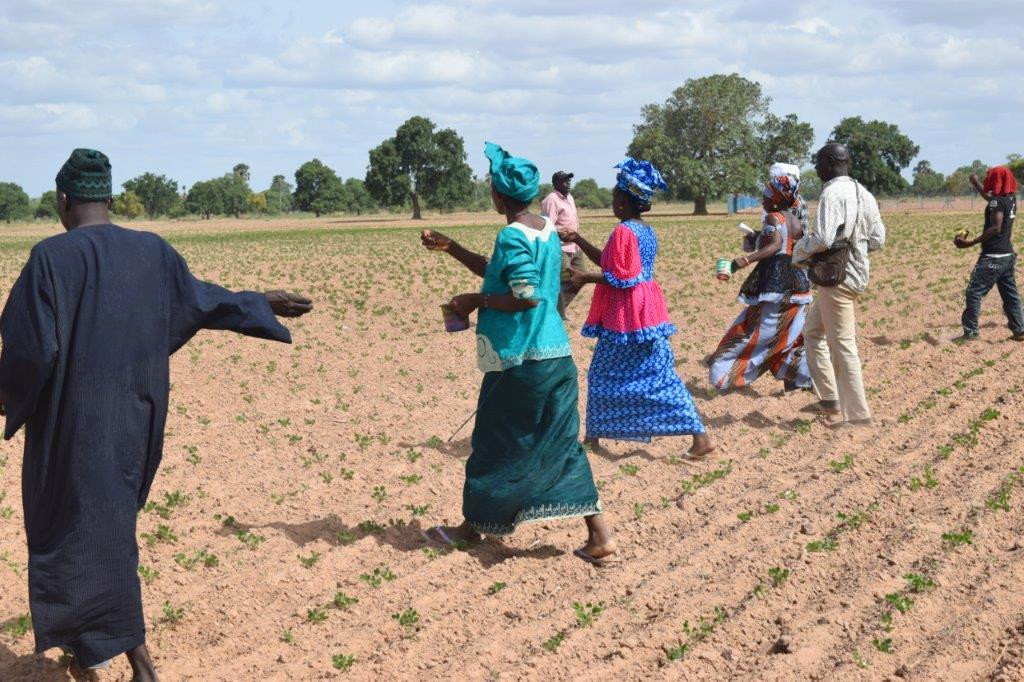
Regarding distribution, Pa-Modou elaborates, “Aflasafe needs to be here with us well ahead of the application date. This year, it arrived two weeks before application, which is an improvement. But the ideal would be at least 30 days ahead.”
Pa-Modou lauds the role of extension workers and ATTC’s sustainable and self-driving approach that emphasises the training of trainers on Aflasafe use alongside good agricultural practices. “This has seen farmers themselves taking the responsibility of extension for new farmers.” An approach that is as empowering as it is liberating, firmly putting farmers fully in control of their own destiny.
In fact, Assan Joof, secretary of the Mollet-Ba farmers co-operative, reports that the farmers do the on-farm Aflasafe application as a team, treating each farm at a time and working as a group in exactly the same manner as they did during that first training. This not only assures correct and uniform distribution of the product, but the community approach ensures that new farmers acquire the same knowledge as the farmers who attended the original expert-aided training, with each new participating farmer growing into an expert in their own right.
“Even when my crop was green and still growing in the field, I could already see that the crop treated with Aflasafe was distinctly different.”
Mr Kemo Diawarra cares for an extended family numbering 25, sustained by a 12-hectare piece of land on which he grows groundnuts and millet. He has been using Aflasafe on his groundnuts for two years now since 2017, having heard of it from NFSPMC. But he’d also learnt about Aflasafe and aflatoxin from the radio and from the Ministry of Agriculture. And even more surprisingly for this seeker of knowledge, across national frontiers from a Nigeria radio station whose signal reached him!

Would Kemo recommend Aflasafe to other farmers? “Absolutely!” he says without hesitation. “Moreover, Aflasafe is now becoming a household name in The Gambia, thanks to NFSPMC. I would buy it on the market since I have seen its benefits, in the same manner I have seen the benefits of fertiliser.” (Aflasafe is currently being made available to farmers in The Gambia through a subsidy programme financed by the International Islamic Trade Finance Corporation of the Islamic Development Bank, implemented by NFSPMC.)
Kemo continues, “I have been farming for years and I know my crops very well. Another difference between the Aflasafe-treated and untreated groundnuts is that the Aflasafe-treated ones are drier which is a consumer preference, and also more solid and robust in warding off insect infestation.”
What improvements would Kemo like to see? “Since people are becoming increasingly aware of Aflasafe and its benefits, the demand is rising. It is therefore important the product arrive on time, so we buy it and apply it on time. Or else NFSPMC will not recover what they have invested. I would also like to see quick buy-back by NFSPMC. Two months is too long a wait.”
“I had heard of the dangers of aflatoxin on the media. Aflasafe has made a big difference for me.”
Mr Omar Diouf heads an extended family of seven that depends on seven hectares where they grow groundnuts and millet. He too has been using Aflasafe for two years now, learning about it from NFSPMC. “I was attracted to the health benefits and the higher price offered for Aflasafe-treated groundnuts,” he reveals. “I had heard of the dangers of aflatoxin on the media. Aflasafe has made a big difference for me. I’m a relatively young farmer with limited experience. Still, I’ve noticed a complete difference between using and not using Aflasafe. With Aflasafe, infestation by insects is minimal. My groundnut yields have gone up and the grains are much larger at maturity.”
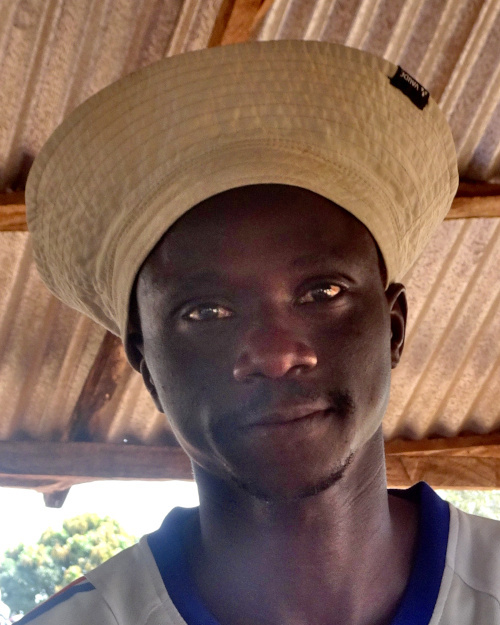
Omar has more to say, “I notice these differences because I did not get enough Aflasafe to treat all my groundnuts, and so I could compare side-by-side, with and without Aflasafe. From the beginning, we’ve had to share Aflasafe in the community. No single farmer had their total acreage covered,” he reveals. “And even then, NFSPMC rightly prioritised experienced farmers with farms of two hectares and more.”
Would Omar be willing to buy Aflasafe after the subsidy programme elapses? “Yes, if it’s affordable,” he responds.
For NFSPMC, the cost will become clear once the Aflasafe SN01 factory currently under construction at Kaolack in neighbouring Senegal is complete. The cost of using Aflasafe is currently at GMD 800 (about USD 16) per hectare. This is at a time when BAMTAARE (Base d’Appui aux Méthodes et Techniques pour l’Agriculture, les autres Activités Rurales et l’Environnement), the exclusive IITA-appointed manufacturer and distributor of Aflasafe SN01 in The Gambia and Senegal, is still importing the product from IITA’s Nigeria headquarters. Aflasafe SN01 is the product specially tailored for The Gambia and Senegal.
So, there we have it from the farmers in their own authentic and unadulterated voice, speaking of their own experiences with – and observations on – using Aflasafe, coupled with good agricultural practices that boost yields.
Next door too, in neighbouring Nigeria, farmers have also reported higher yields in Aflasafe-treated maize and groundnuts. And yet, in disseminating Aflasafe to farmers, one of the main messages we emphasise over and over again is that Aflasafe improves the quality of the treated crop, but does not improve yield.
So where does that leave us and what is the correct position in this seeming contradiction between what the science says and what the farmers see? It would appear farmers are in the lead and headed in the right direction, but science too is quickly catching up on farmer observations. Case in point: just recently, a paper evaluating biocontrol agents in USA fields reported an increase in yield when maize was treated. That said, observations by farmers in The Gambia, Ghana, Senegal and Nigeria, and by researchers in USA need to be properly evaluated and thoroughly investigated to determine what brings about the improved yields reported.
And while the jury is still out on the science behind this good phenomenon reported by farmers, researchers, and consumers alike, the Aflasafe revolution continues to combat aflatoxin.
Meantime, dipping briefly into matters technical, there is long-standing scientific evidence (Zaika and Buchanan, 1987; Fanelli and Fabbri, 1989; Wilkinson et al, 2007) that toxic Aspergillus fungi vary in their crop content utilisation method (particularly lipids and amino acids).
“Atoxigenic [ie, non-poisonous] isolates such as those composing Aflasafe products do not have those pathways,” clarifies Alejandro Ortega-Beltrán, pathologist and Aflasafe’s R&D leader for West Africa at IITA. “Because of this, the residuals content after infection is different, and the crops may therefore taste different.”
Apparently, better for the palate, as has been reported by consumers in Kenya who have said food prepared with maize meal milled from Aflasafe-treated maize is tastier.
LINKS
- Business unusual in Senegal with aflatoxin-beating Aflasafe SN01: health trumps profit
- ’Tis the season for going nuts in The Gambia and Senegal: Protecting groundnuts from aflatoxin with Aflasafe SN01 (Farmer training in The Gambia and Senegal on how to apply Aflasafe)
- Technology leap for Senegal and The Gambia to combat aflatoxin in food
- Keep updated on Aflasafe in The Gambia
- News story, Senegal: Boun Abdallah annonce la construction d’une unité pour lutter contre les aflatoxines

